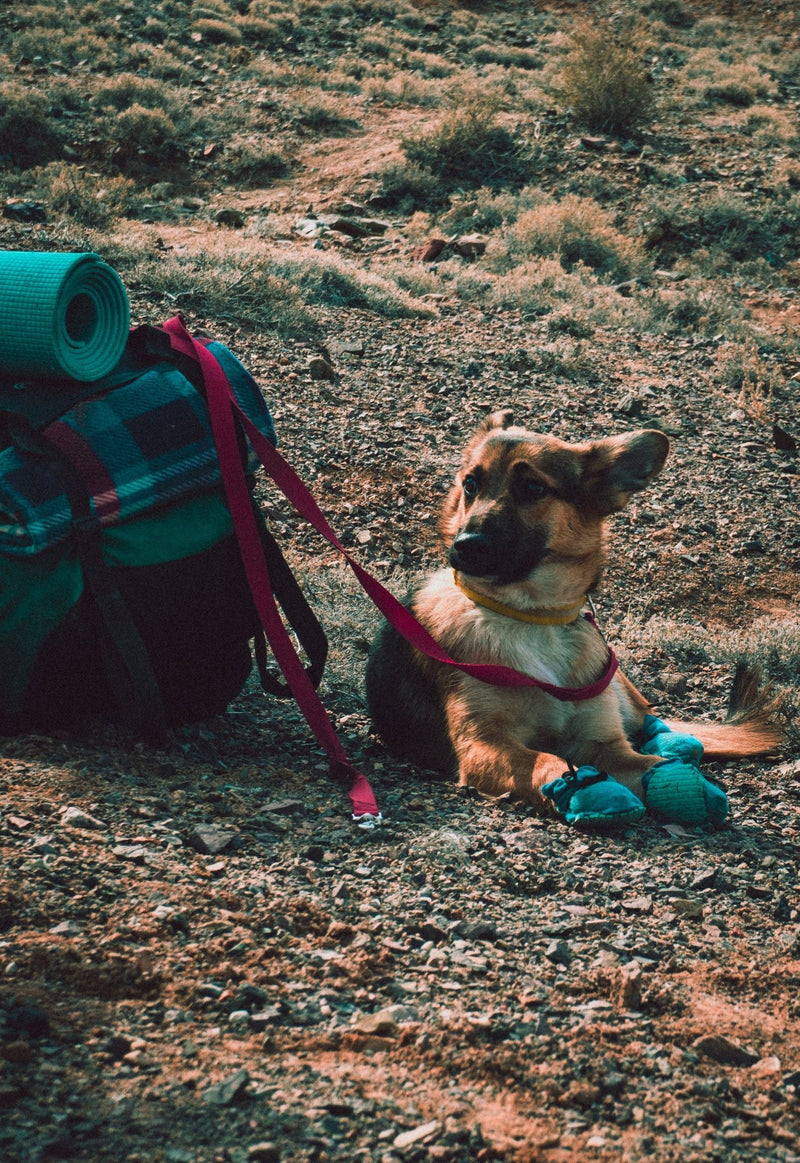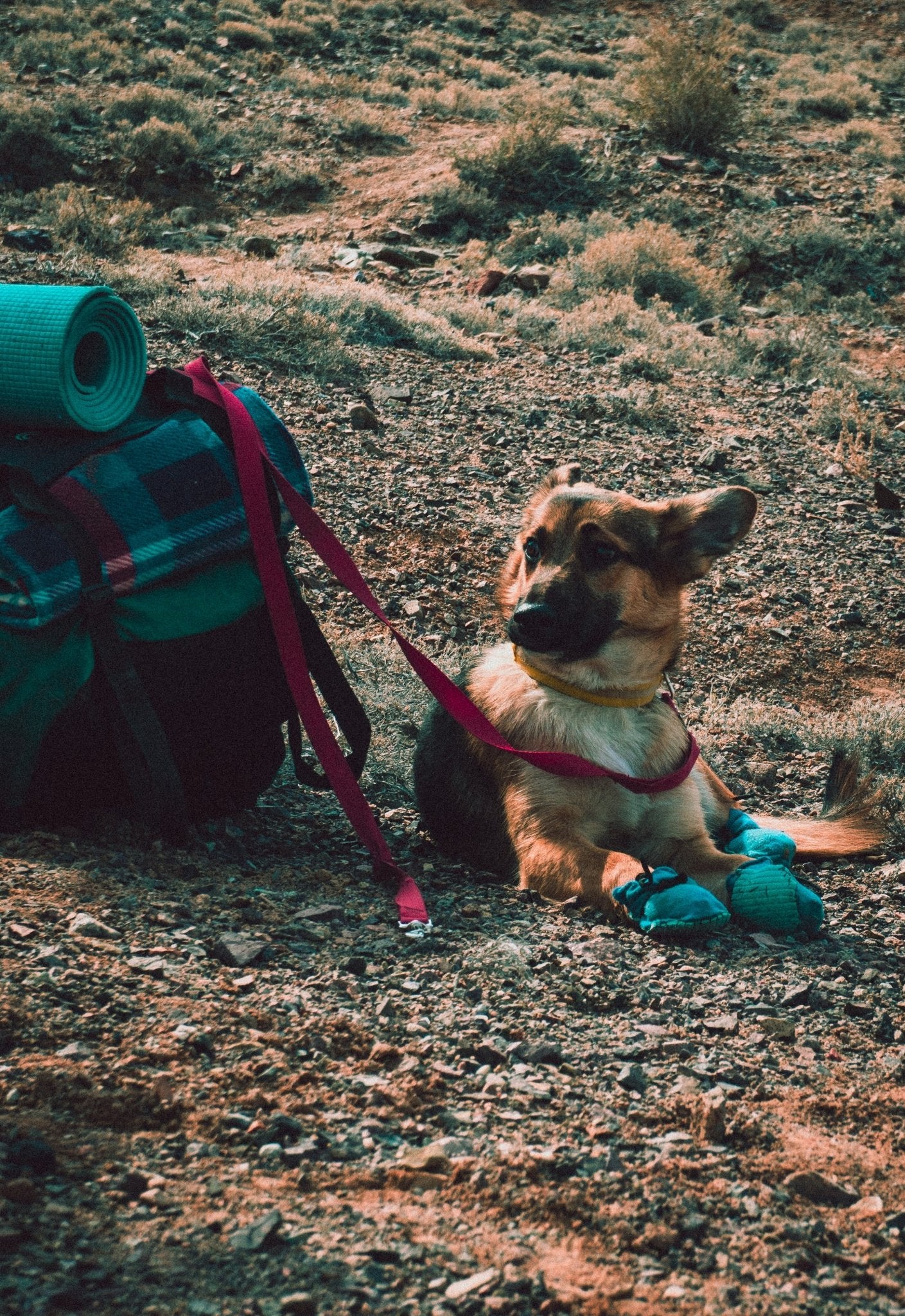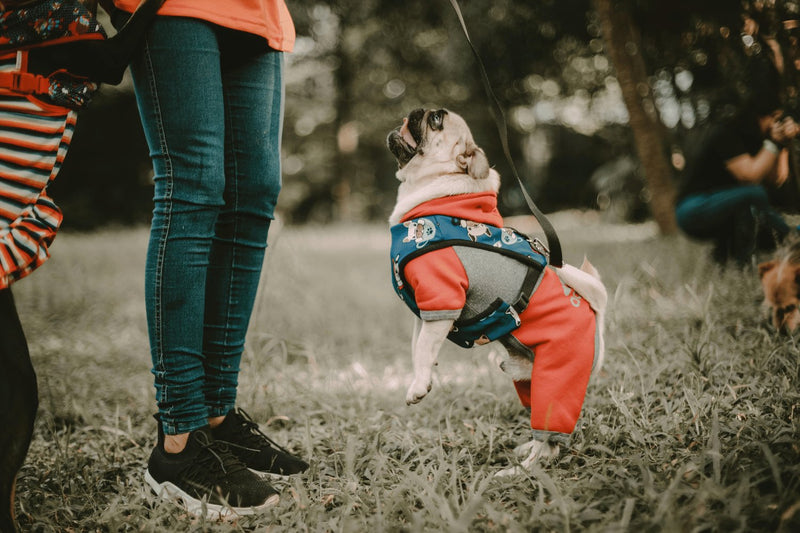
Welcome to the blog where we're tackling the art of traveling with your dog – an experience that's as rewarding as it is challenging. Bringing your furry friend on your journeys isn't just about having a pet along for the ride; it's about sharing adventures with your most loyal companion. Dogs have a remarkable way of turning every outing into a social event. They break the ice with strangers, turning curious glances into friendly conversations. And when it comes to stress relief, there's nothing quite like the calming presence of your dog. Their unbridled joy and carefree nature are contagious, reminding us to appreciate the simple pleasures of life.
Then there's the fitness aspect. With a dog by your side, every trip becomes an active adventure, filled with walks and exploration. It's a fun and natural way to stay active while enjoying new surroundings. And let's not forget the humour that comes with traveling with a dog. Their playful antics and curious explorations can turn even the most mundane moments into delightful memories. Lastly, there's an added sense of security when your four-legged friend accompanies you. Their keen senses and protective instincts offer an additional layer of comfort, especially when exploring unfamiliar places.
So, as we delve into the tips for traveling with your dog, remember that this journey is about companionship, shared experiences, and the unique bond that only a pet and owner can understand.
Thorough Health Check and Essential Documentation:
First and foremost, a comprehensive health check is paramount. This is not just a cursory glance but a detailed examination to ensure your furry friend is fit for travel. Vaccinations should be at the top of your checklist. Are they up to date? It's not just about complying with travel regulations; it's about safeguarding your pet's health. This is particularly vital if your travel itinerary includes boarding facilities or social spots where other animals congregate. You never know what pesky germs might be lurking!
Carry All Health Records: Just as you wouldn't travel without your passport, your pet's health and vaccination records are their passport. These documents are your proof of your pet’s health history and immunizations, and they're often mandatory in kennels, pet hotels, and even some public spaces. Keep them handy – you never know when you'll need to present them.
Heartworm Prevention and Other Medications: If your travel plans involve outdoor adventures, especially in regions notorious for mosquitos, heartworm prevention is not just recommended; it's essential. Mosquitos are more than just annoying; they can be harbingers of diseases. A quick consultation with your vet can provide insight into any additional vaccinations or preventative medications tailored to your destination. This step is all about proactive care.
Microchipping for Safety: Microchipping your pet is a small step with huge implications. In the unfortunate event that your pet gets lost, a microchip can be the critical link that reunites you with your furry friend. It's a simple procedure that can offer peace of mind.
Identification Collars: Alongside microchipping, a collar with an ID tag engraved with your contact details is fundamental. This is one of the quickest ways for someone to reach you if your pet wanders off. The tag should include your pet's name, your phone number, and any relevant health information.
In summary, preparing your pet for travel is all about meticulous planning and taking proactive steps for their health and safety. Ensuring they are healthy, up-to-date with vaccinations, and easily identifiable are key aspects of a stress-free and enjoyable trip with your beloved companion.
Pack a Pet Travel Kit
When packing for a trip with your pet, think of it as equipping a mini mobile home for them. Begin with their usual food to avoid digestive upsets and include a collapsible bowl for meals and drinks, plus an extra for lengthy outings. Hydration is vital, so carry a portable water bottle or bowl, particularly handy during active adventures or in warm climates. A reliable leash is essential for control in new environments, along with biodegradable bags for waste management. Don’t forget grooming supplies to keep them neat, and any necessary medications, including extras for emergencies. For their comfort and anxiety reduction, bring along a favourite toy or pillow, providing a sense of familiarity amidst new surroundings. Also, pack emergency information, like a pet photo and health details, along with an extra collar and tag with updated contact info. This carefully prepared travel kit ensures your pet's needs are met, making the journey enjoyable for you both.
Secure and Comfortable Transportation
Choice of their carrier is a crucial decision that can significantly impact their comfort and safety. Whether you're embarking on a road trip or flying to your destination, the carrier should be a sanctuary for your pet. Firstly, ensure the carrier is well-ventilated. Good airflow is essential to prevent overheating and to keep your pet comfortable, especially during long journeys. The carrier should also be secure, meaning it's sturdy and escape-proof. This not only keeps your pet safe but also gives you peace of mind.
Size matters when it comes to pet carriers. Your pet should be able to stand up, turn around, and lie down comfortably. A cramped carrier can cause anxiety and discomfort, leading to a stressful experience for your pet. It's also worth considering a carrier with padding or room for a small bed inside to provide extra comfort, particularly for older pets or those with joint issues.
Acclimatizing your pet to the carrier well before the trip is a step that shouldn't be overlooked. This involves getting them used to being inside the carrier for extended periods. Start by placing their favourite toys or treats inside to encourage them to enter voluntarily. Gradually increase the time they spend inside, so it becomes a familiar and safe space. This practice can help reduce anxiety and make the actual travel experience much smoother.
For car travel, secure the carrier with a seatbelt or place it in a stable position to prevent it from shifting or tipping over. In the case of air travel, check with the airline for specific pet carrier requirements, as they can vary. Some airlines allow small pets in carriers under the seat, while others may require pets to travel in the cargo area. Knowing these details in advance can help you prepare appropriately and ensure a safe journey for your furry friend.
Frequent Breaks and Exercise
When embarking on a lengthy road trip with your furry companion, incorporating regular breaks is essential for their well-being and comfort. Just like humans, pets need the opportunity to take a breather from the confines of a vehicle. These breaks are crucial not only for bathroom needs but also for mental stimulation and physical exercise.
Ideally, plan to stop every two to three hours. Look for pet-friendly rest areas, parks, or open spaces where your pet can safely explore and stretch their legs. These moments are invaluable for your pet to relieve themselves, reducing the risk of accidents inside the vehicle. Remember to bring a leash to maintain control and ensure their safety in unfamiliar environments.
Exercise during these breaks is also key. It helps pets burn off pent-up energy accumulated from sitting in a carrier or vehicle for extended periods. Engage your pet in light play or a short walk. This physical activity is not only beneficial for their physical health but also aids in reducing anxiety or hyperactivity, making them more relaxed once back in the vehicle.
Additionally, these breaks provide an excellent opportunity to offer your pet some water and a small snack if needed. Staying hydrated is important, especially in warmer climates. However, avoid feeding them a full meal until you've reached your destination or settled for the night, as traveling can sometimes cause stomach upset in pets.
Furthermore, these stops can be an enjoyable part of the journey for your pet, offering them new scents to sniff and environments to explore. It makes the trip more enriching and enjoyable for them, breaking the monotony of a long drive.
In summary, frequent breaks during road trips are vital for your pet’s physical needs and overall happiness. They help make the journey more pleasant for everyone involved and ensure that your pet arrives at the destination as relaxed and stress-free as possible.
Comfort from Home
Bringing along a piece of home can significantly ease their stress and anxiety, especially in unfamiliar or bustling environments. Pets, much like humans, find comfort in familiarity. A favourite toy, pillow, or even a blanket that smells like home can be incredibly soothing for them. These items carry the scent and essence of their familiar environment, providing a sense of security and normalcy amidst the newness of travel.
A favourite toy serves not just as a plaything but also as a comforting companion for your pet in times of loneliness or stress. It can be particularly helpful in situations where your pet needs to be left alone, such as in a hotel room or a pet carrier. The toy acts as a distraction and a source of comfort, reminding them of the safety and familiarity of their home environment.
Similarly, a pillow or blanket that your pet frequently uses has their scent, which is immensely calming for them. This is especially true in situations where your pet is surrounded by unfamiliar smells and sounds, like in a hotel, campsite, or a new house. Having their own bedding means they have a designated, comfortable spot to rest, no matter where they are. It's a small piece of territory that belongs exclusively to them.
For pets that are particularly anxious or sensitive to new environments, these familiar items can make a significant difference in how they perceive and adapt to the change. It helps in reducing their anxiety, making them feel less exposed and more at ease.
Additionally, incorporating these familiar items into their travel routine helps in establishing a sense of continuity. Pets thrive on routine and familiarity, so maintaining some elements of their normal life can help mitigate the stress of change.
In essence, bringing along a piece of home is a simple yet effective way to ensure your pet’s comfort during travel. It’s a gentle reminder of home, providing emotional support and stability, and making the overall travel experience much more pleasant for your beloved companion.
Pet-Friendly Accommodations
Securing pet-friendly accommodations is essential for a smooth travel experience with your pet, requiring more than just identifying places that allow pets. Begin your search on travel websites and apps, using filters to find hotels, vacation rentals, or campgrounds that are explicitly pet-friendly. It's important to understand the details of their pet policy, such as size, breed, or number restrictions, and note if certain areas are specifically for pet-owning guests.
Be mindful of any additional pet fees or deposits, as these vary and can affect your budget. After booking, prepare for your pet's stay by bringing familiar items like bedding and toys to make the space homely and ease their adjustment. Upon arrival, acquaint your pet with the new environment and spend extra time to help them settle. Adhere to the accommodation's pet rules, including walking areas and waste protocols, and familiarize yourself with the local area for safe walks and to identify potential hazards.
Properly planning for pet-friendly accommodations ensures not only rule compliance but also your pet's comfort and safety, making for a pleasant stay for you both.







